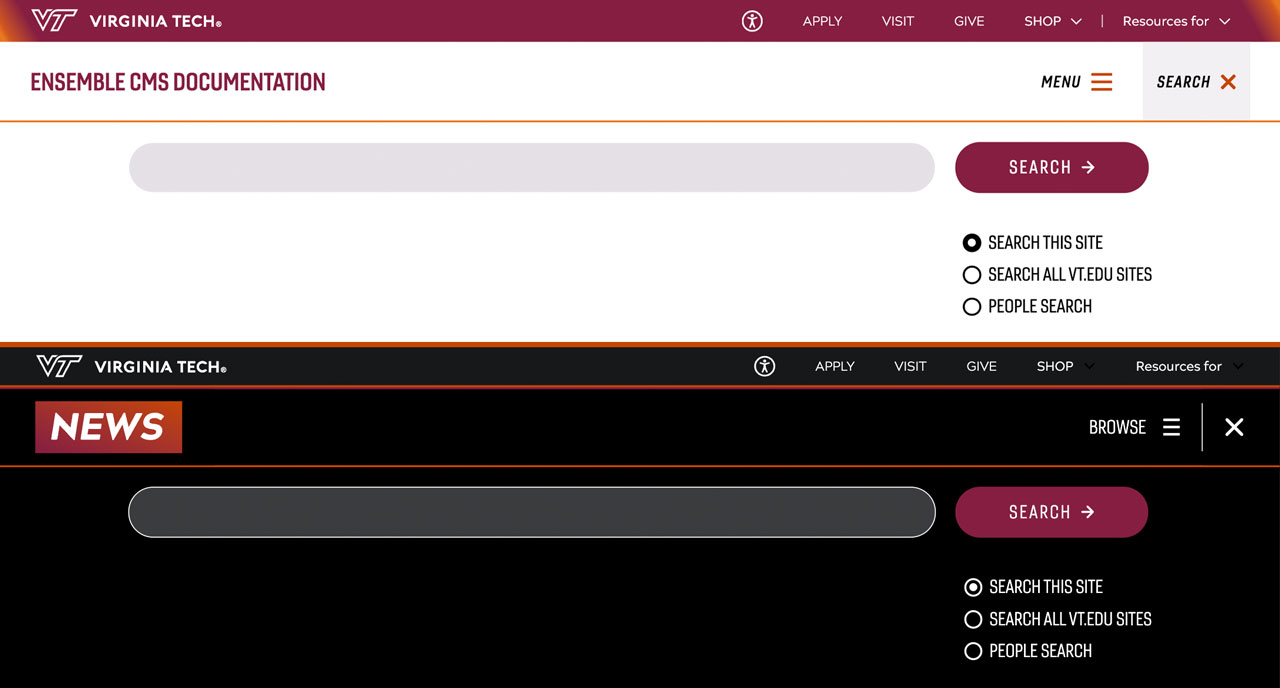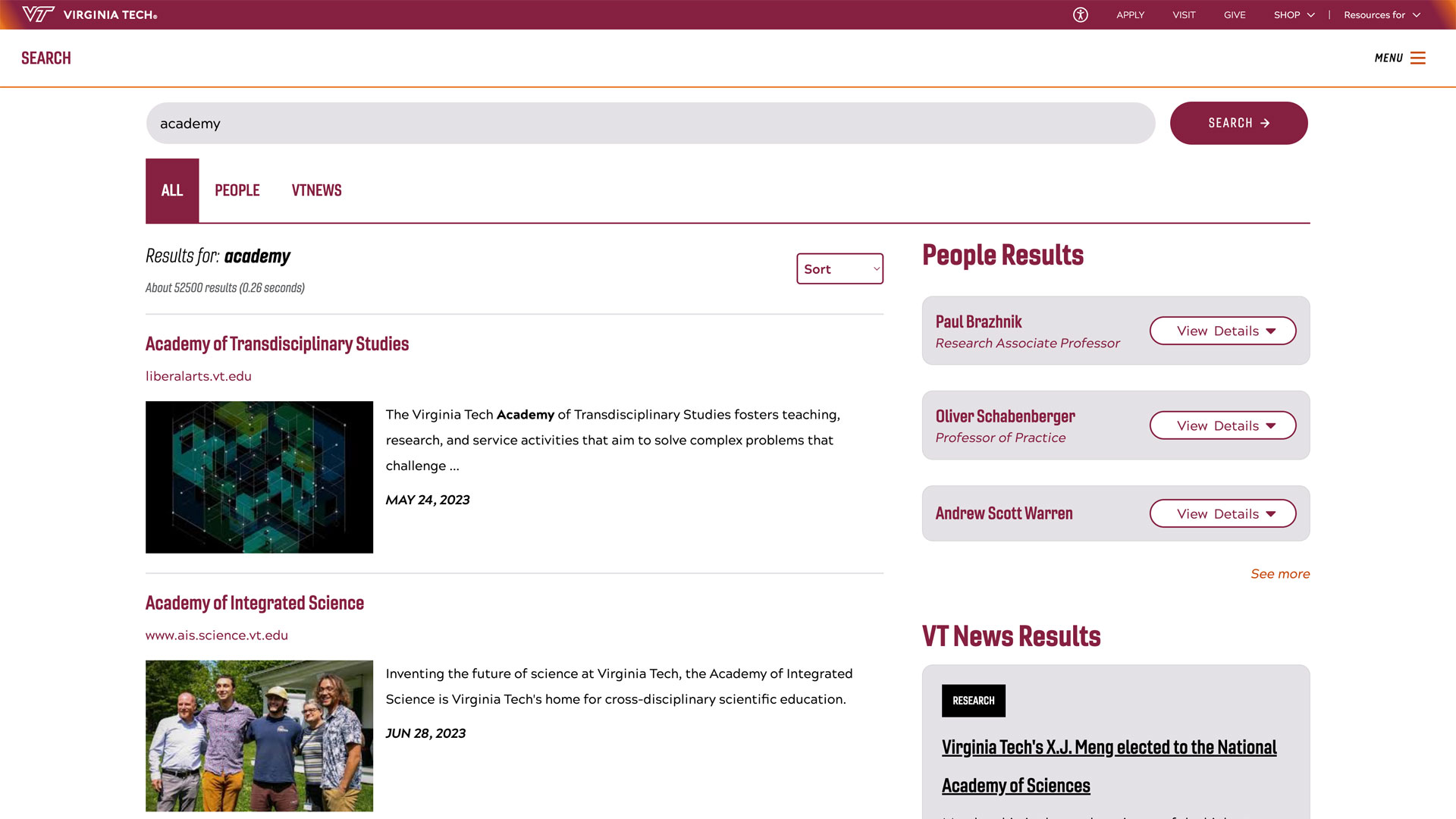Students create nature-inspired sculpture to welcome visitors to Alexandria

On a quiet afternoon last summer, Braden Perryman stood beneath a Kousa dogwood tree in his backyard and saw more than a seasonal bloom. He saw a metaphor for convergence.
“I was looking at the form of the dogwood fruit. They are composed of all these little cells that combine to make a larger piece, the fruit,” said Perryman, a graduate student studying creative technologies and set to graduate in May.
Inspired by the symmetry of the dogwood fruit and driven by the idea of connection and complexity, Perryman began sketching what would become a centerpiece of his thesis project and a public art piece.
The 8-foot public sculpture, “Emergence,” now stands on the green space near the Potomac Yard–Virginia Tech Metro station and adjacent to Virginia Tech’s new Academic Building One in Alexandria. It was designed and constructed entirely by Virginia Tech students from multiple disciplines, including art, engineering, and design.
The sculpture was commissioned for Academic Building One and supported by the Institute for Creativity, Arts, and Technology (ICAT). It greets commuters and visitors alike while signaling the university’s presence in Northern Virginia.


“This is a new Metro station, and this is an area that’s rapidly developing. So ‘Emergence’ could be an interesting draw to get people over to this side of town,” said David Baker, assistant vice president of the Innovation Campus. “It’s something folks can walk up to, touch, take photos with, and hopefully, wander down the street to discover what’s happening at Virginia Tech.”
Set in a green space developed by JBG Smith, the university’s real estate and development partner, the installation is meant to be both a destination and a portal.
“The sculpture is an embodiment of different groups coming together to create something new at the center of next,” said Baker, referencing Virginia Tech’s expanded presence in Alexandria with the new Academic Building One.

The piece was digitally designed using the parametric modeling software Rhinoceros 3D with Grasshopper, then constructed from Corten steel. The weather-resistant material was chosen for its durability, recyclability and the color of its rust, which is a distinct warm shade of brown.
“Emergence” grew out of a desire to have a physical representation of the kinds of powerful collaborations Virginia Tech is making possible, according to Ben Knapp, executive director of ICAT.
“We wanted to find a team from Virginia Tech that was creating work at the boundary between the arts and sciences,” Knapp said. “When Braden and Trevor Finney brought their proposal forward, we knew we had something special on our hands.”
Perryman worked closely with Finney, who graduated with a Master of Fine Arts in creative technologies in December 2024, to guide a team of more than a dozen student employees through a complex, month-long fabrication process. The team members’ area of study ranged from mechanical engineering and environmental policy to architecture and studio art.

“From the 3D model, every surface was flattened, digitally marked for bending and plasma cut,” Perryman said. “Each cell was then hand-assembled with bolts and fitted with internal bracing. We designed it so the whole structure could be disassembled and recycled if needed.”
The project is one of many boundary-crossing projects ICAT regularly supports.“In this project, ICAT’s role was to help Braden and the team produce an incredibly complex sculpture,” Knapp said. “We helped with logistics, budgeting, fabrication space, and safety to ensure the students could succeed.”
The result is a piece that blends form and function, beauty and biomechanics. Its geometry echoes not just the Kousa dogwood fruit but also the outer layers of the new Virginia Tech building itself.
To Perryman, the process has been as meaningful as the product.
“In many ways, the sculpture is a byproduct. The real art is the community that came together to build it. Students from completely different majors collaborating and learning from one another, that’s what this is really about,” he said.
“Emergence” is expected to remain in place through September, following its installation in late February. It will be relocated a few blocks north to Academic Building One grounds for permanent display thereafter.
“We are meeting the public where they are,” Baker said. “Once people feel comfortable and familiar with it, they’ll follow it, and us, back to campus.”
The sculpture also represents the culmination of Perryman’s thesis work in creative technologies.
“It’s the most difficult project I’ve ever worked on,” Perryman said. “I think it shows what students can do when they’re trusted, given the tools and a real challenge.”













